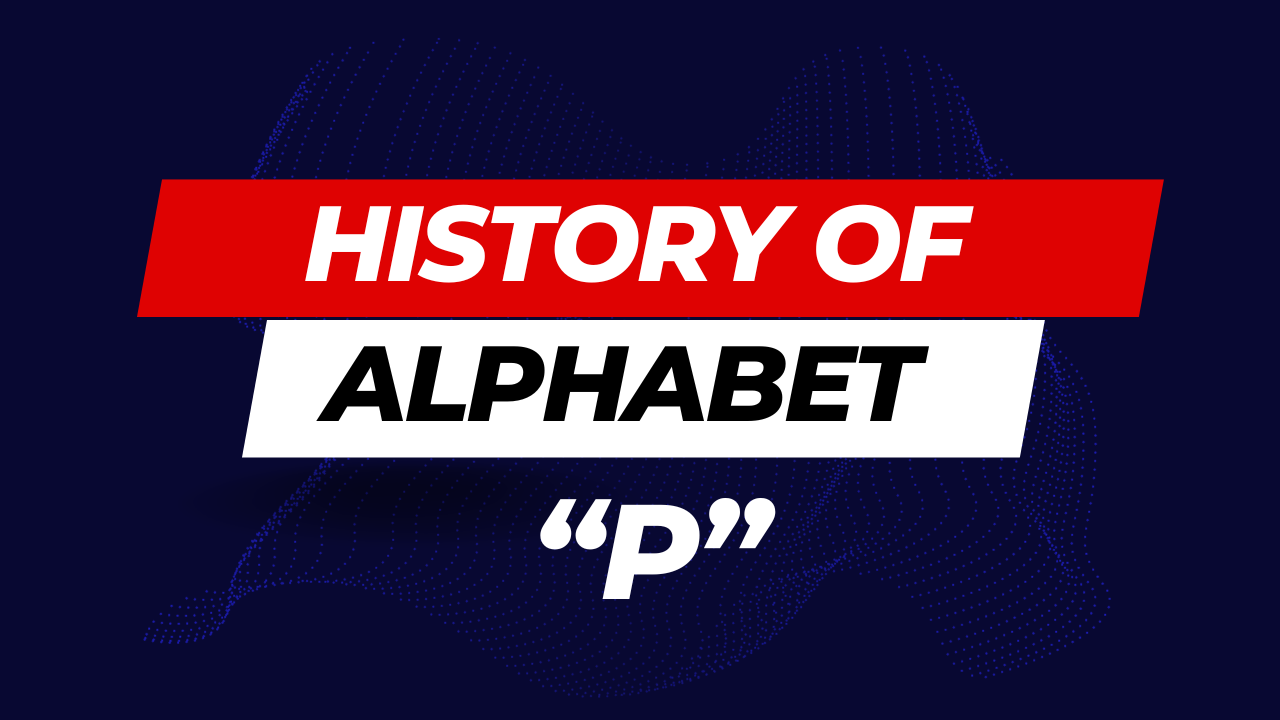
History of Alphabet (P) - A Fascinating Journey through Time and Language
In the intricate tapestry of language, the letter "P" holds a special place, shaping words and conveying meanings across diverse cultures. Its history is a fascinating journey that spans centuries and continents. From ancient civilizations to modern linguistic landscapes, the story of the letter "P" is one of evolution, symbolism, and cultural exchange.
Unraveling the Origins of "P":
The History of Alphabet "P" can be traced back to ancient Phoenicia, where skilled craftsmen carved the letter on their inscriptions. It represented the sound "pe," a voiceless bilabial plosive, and quickly found its way into the alphabets of neighboring cultures, including the Greeks and Romans. The seamless integration of "P" into these languages marked the beginning of its widespread usage.
"P" in Different Cultures and Languages:
Phoenician Roots
The Phoenicians, known for their seafaring prowess, spread the use of "P" across the Mediterranean. It became an integral part of their written language, symbolizing sounds vital to communication.
Greek Influence
In ancient Greece, the letter "P" took on new forms and sounds. It became "pi" (Π), signifying a voiceless stop. Greek scholars used "pi" extensively, giving rise to numerous words and concepts that shaped Western philosophy and science.
Roman Adaptation
The Romans, masters of assimilation, borrowed heavily from Greek culture, including their alphabet. "P" made its way into Latin as "P," retaining its significance in words related to power, prestige, and governance.
The Symbolism of "P":
In various cultures, the letter "P" acquired symbolic meanings beyond its phonetic value. In ancient Chinese philosophy, it represented the balance between Yin and Yang, embodying harmony and duality. In medieval Europe, it adorned coats of arms, denoting lineage, honor, and lineage.
Evolution of "P" in Modern Languages:
As languages evolved, so did the usage and pronunciation of "P." From the Germanic languages of Europe to the tonal languages of Africa and Asia, the letter adapted to diverse phonetic systems, enriching the global linguistic landscape.
FAQs about the History of Alphabet "P":
When was the letter "P" first used in writing?
The letter "P" was first used in writing by the ancient Phoenicians around 1200 BCE. They carved it into their inscriptions, marking the beginning of its historical journey.
How did "P" evolve in different languages?
"P" evolved differently in various languages. In Greek, it became "pi" (Π), signifying a voiceless stop. In Latin, it retained its form as "P," symbolizing power and governance. These variations showcase the adaptability of the letter across cultures.
What are some common words derived from the letter "P"?
Several common words are derived from the letter "P," such as "peace," "power," "prosperity," and "progress." These words reflect the positive connotations associated with the letter throughout history.
Is "P" significant in any ancient symbols or cultures?
Yes, "P" holds significance in various ancient symbols and cultures. In Chinese philosophy, it represents the balance between opposing forces, while in medieval European heraldry, it denoted honor and lineage.
How has the pronunciation of "P" changed over time?
The pronunciation of "P" has undergone subtle changes over time, influenced by regional accents and linguistic shifts. However, its distinct sound as a voiceless bilabial plosive has remained consistent across many languages.
Are there any famous literary works featuring the letter "P"?
Yes, several famous literary works feature the letter "P." One notable example is Edgar Allan Poe's poem "The Raven," where the repetition of the sound "P" adds to the poem's eerie and rhythmic quality.
Conclusion:
The History of Alphabet "P" is a testament to the enduring legacy of language. From its humble beginnings in ancient inscriptions to its pivotal role in modern communication, the letter "P" has stood the test of time. Its evolution across cultures and languages reflects the ever-changing nature of human expression.
Embrace the rich history of "P" and appreciate its significance in shaping the words we speak and write today.

.png)

.png)
0 Comments